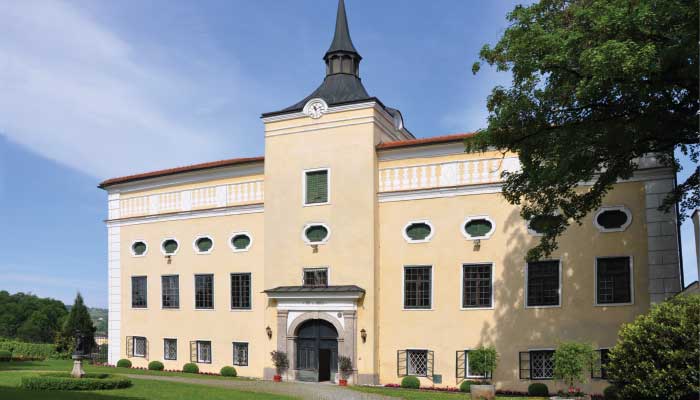
As a house for culture and the arts, Kremsegg Castle, with its unique and valuable collections and exhibitions, forms the basis for a continous development towards an international centre of excellence for scholarship, research and education.
The range of activities on offer at Kremsegg Castle includes the museum, academic, artistic and pedagogical discourse with regional, national and international experts, colleges and universities, and a variety of different concert series.
The musical instrument museum with its impressive collections forms the „sounding heart“ of the complex. Kremsegg Castle houses one of the most prestigious museums in Upper Austria. It reflects the high standard of the domestic musical landscape and represents the historico-cultural counterpart to the wide network of music schools and music societies in Upper Austria.
|
|
History of Kremsegg CastleAt the end of the 12th century the Rot family – also called Rufus – built an „Ansitz“ (a raised hide) on this site. In 1230 this was first mentioned in a document. Between 1283 and 1299 the building was converted into a castle, and then several decades later into a stronghold as a refuge for the inhabitants of Kirchberg and Kremsegg.
In the middle of the 15th century the male line of the Rots came to an end; Barbara Rothin married Andreas Grünthaler, a rich citizen of Steyr. In this way „Crembseck“ came into the possession of the Grünthaler family. The simple stronghold was converted into a handsome property during the period of their ownership.In 1662 Grünthaler was granted the status of an imperal free baron. A „Housekeeping book of the Grünthalers“ has survived and was published in 1994, giving an insight into the way of life in Kremsegg Castle at that time.
In 1929 Countess Therese Kinsky von Wchinitz-Tettan (1902–1973) bought the property. After she died her heir Count Cernyn sold the castle to the industrial family Lutzky. They renovated the building and allowed the public access to their beautiful property. An operating company was founded, tennis courts were constructed inside and out and in addition a café was built. In the castle various events such as concerts, balls, poetry readings and so on took place. Werner Lutzky's great passion for collecting Old Timers led to the creation of a motor museum in the former farm buildings of the castle estate. The owner of the castle also had the castle tower rebuilt on a smaller scale, which was derelict after being destroyed by lightning.
After a period of economic difficulties and the transfer of the firm Lutzky Glass to the Vetropak Holding AG, the newly-founded sponsoring association Musica Kremsmünster took over the castle estate in 1996. Most of the extensive collection of cars was taken to Hartberg in Styria. |